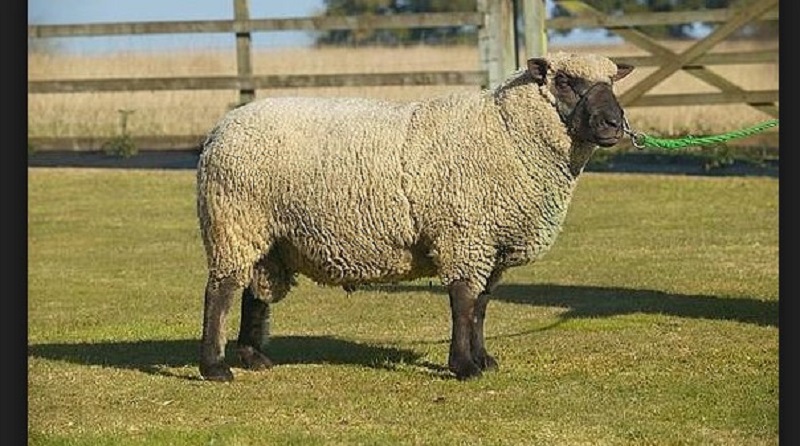The Shropshire breed of domestic sheep originated from the hills of Shropshire, and North Staffordshire, England, during the 1840s. The breeders in the area used the local horned black-faced sheep and crossed them with a few breeds of white-faced sheep (Southdown, Cotswold, and Leicester). This produced a medium-sized polled (hornless) sheep that produced good wool and meat. In 1855 the first Shropshires were imported into the United States (Virginia). This breed is raised primarily for meat.
Heritage Shropshire Breed Description
General Appearance: Alert, attractive, indicating breeding and quality, with stylish carriage and asymmetrical form, showing the true characteristics of the Shropshire, covered with fine, dense wool. Active with free action. Shoulders blending smoothly into the ribs. A full heart girth, strong and straight back with adequate body capacity.
Constitution: Robust as indicated by width and depth of chest, strength and formation of the neck, and by bold active movement.
Size: Medium-sized; in breeding condition when fully matured, rams should weigh 180 to 240 lbs, and ewes should be 140 to 200 lbs. Fleece and Skin:
Fleece: Of good length, dense, elastic to touch, medium-fine, free from black fibre, well crimped, with evenness of texture throughout; scrotum of rams well covered with wool. The skin of light cherry colour, clear and free from dark spots.
Body: Well fleshed, long, deep and symmetrical. Well proportioned, with shoulders strong, smooth and blending well into the body, well placed, fitting smoothly upon the chest, which should be deep and wide; forearm well-muscled; long, broad, straight level back; well-sprung ribs; thick, wide and long loins well covered with firm flesh; hips wide and smooth. Rump long, hindquarters well developed, long and wide with dock well set on and twist deep and full, legs of mutton full, deep and well-muscled.
Head and Neck: Head, short, broad between the ears and eyes, bold and masculine in rams, without horns; straight or slightly dished face, broad muzzle, masculine on rams, feminine on ewes; white dense wool well covering the whole poll and cheeks and jaw; eyes bright and alert; colour of face and ears dark brown, grey nose hairs permissible. Neck short, strong and muscular (especially in rams), symmetrically blending head and shoulders in graceful outlines.
Ears: Short, alert and well set, not upright but perpendicular to head, moderate thickness, colour same as face and legs, cinnamon to dark brown or soft black. Rounded tips, wool covering the outside ear.
Legs and Feet: Legs strong, short, straight, well wooled and well set apart; the colour of the hair on legs dark chocolate brown, and colour of wool on legs white; feet sound, short in the hoof, and set squarely under the sheep.
Objections: Animals otherwise good, undersized, oversized; long legs; long neck; narrow bodies; dark fibre in wool, dark skins, white specks on ears, face and legs; horns or horn stubs on rams; lack of wool covering on cap or underneath the body, face and legs; skin folds in the neck area; long, large or drooping ears, thick-skinned or coarse; coarse or Roman nose; jet-black face and leg colour; black armpit; lack of wool below hocks and knees.
